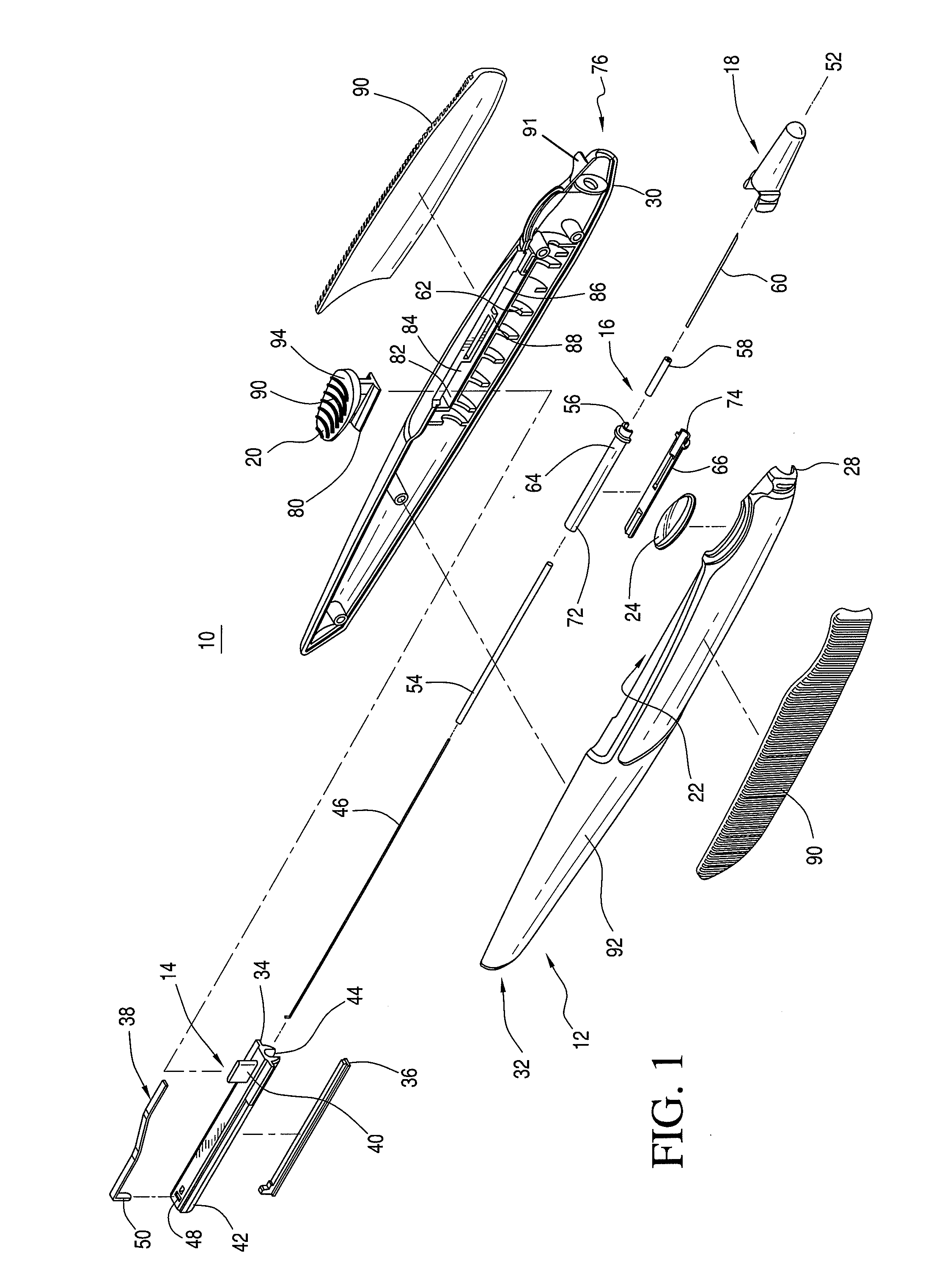Ocular Implantation Device
- Summary
- Abstract
- Description
- Claims
- Application Information
AI Technical Summary
Benefits of technology
Problems solved by technology
Method used
Image
Examples
Embodiment Construction
[0036]An ocular implantation device is disclosed that provides a user a visual indication of the status of an implant to be delivered to a target tissue prior to delivery. The device further provides a tactile indication of the status of the implant to be delivered prior to delivery.
[0037]As used herein, the term “implants” refers to ocular implants or drug delivery devices that can be implanted into any number of locations in the eye and that may release a controlled amount of a bioactive agent or therapeutic immediately or over time. The term implants may include microimplants that have a sufficiently small cross-sectional area that they can be delivered by methods and / or using devices according to the invention that result in self-sealing of the eye at the puncture site associated with the delivery.
[0038]Although many implantable devices may be suitable for use with the ocular implantation device disclosed herein, devices having a tube shape, such as those described in U.S. Pat. ...
PUM
 Login to View More
Login to View More Abstract
Description
Claims
Application Information
 Login to View More
Login to View More - R&D
- Intellectual Property
- Life Sciences
- Materials
- Tech Scout
- Unparalleled Data Quality
- Higher Quality Content
- 60% Fewer Hallucinations
Browse by: Latest US Patents, China's latest patents, Technical Efficacy Thesaurus, Application Domain, Technology Topic, Popular Technical Reports.
© 2025 PatSnap. All rights reserved.Legal|Privacy policy|Modern Slavery Act Transparency Statement|Sitemap|About US| Contact US: help@patsnap.com



